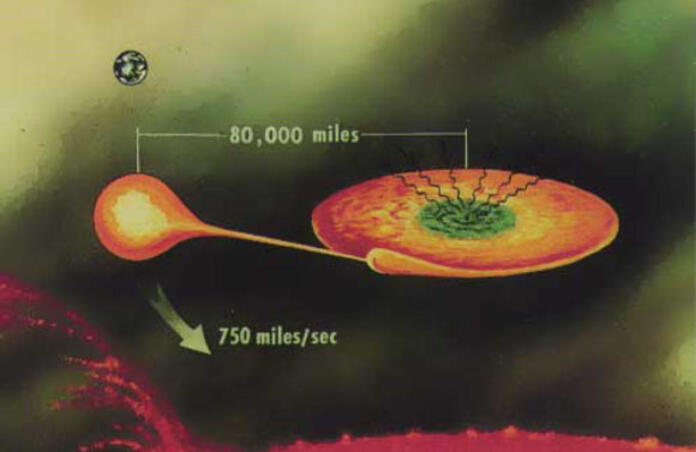Fastest neutron star discovered yet

A study by researchers at DTU space have discovered one of the fastest rotating neutron stars ever observed, with a rapid rotation rate of 716 times per second. The discovery of such fast spinning stars are very useful tools that can help astronomers better understand their interior structure, since the maximum rate at which a star can spin reveals insight into how they are held together and how they form.
Neutron stars are the remnants of massive stars that are in the later stages of their life, exploding as supernovae. Due to the collapse of the massive stars core, neutron stars spin up as they form, so they all rotate on their axes. This rotation rate decays as they age due to the interactions between their magnetic fields and interstellar space. These extreme objects are the densest bodies in the universe, with typical diameters of 12km and masses 1.4x the sun.
The neutron star is part of an X-ray binary system called 4U 1820-30, located in the Sagittarius constellation near the centre of the milky way. "We were studying thermonuclear explosions from this system and then found remarkable oscillations, suggesting a neutron star spinning around its center axis at an astounding 716 times per second," says senior scientist Dr. Gaurava K. Jaisawal from DTU Space at The technical University of Denmark, who is part of an international team of researchers behind the new finding.
If such oscillations were to be confirmed, this star would be one of the fastest spinning objects observed in the universe, the other being another neutron star named PSR J1748-2446 which spins at the same rate.
The rapid rotator was observed using NASA’s NICER X-ray telescope. The telescope is fitted with DTU space star tracking technology, mounted outside the International Space Station. The tracking camera system makes sure that the instrument is constantly pointing in the correct direction, aiming at small, distant neutron stars.

The rapid system comprises a neutron star and a white dwarf companion, which orbits the star every 11 minutes making this the shortest known orbital period. Due to the extreme gravity experienced, the neutron star strips material off of the companion star. When enough material has built up on its surface, a powerful thermonuclear burst occurs on the neutron star, akin to an atomic bomb.
"During these bursts, the neutron star becomes up to 100,000 times brighter than the sun, releasing an immense amount of energy," explains Associate Professor at DTU Space, Jerome Chenevez, who contributed to the new study.
"So we are dealing with very extreme events, and by studying them, we get new insights into the existing life cycles of binary star systems and the formation of elements in the universe."
Using NICER observations made between 2017 and 2021, the team uncovered 15 thermonuclear X-ray bursts from the star. One of these bursts displayed a particular signature known as thermonuclear burst oscillations, which occurred at a frequency of 716Hz. Such oscillations match the spin frequency of the neutron star itself, resulting in a rapid stellar rotation rate of 716 times per second.
--
Cover image: NASA
Journal source: Gaurava K. Jaisawal et al, A Comprehensive Study of Thermonuclear X-Ray Bursts from 4U 1820–30 with NICER: Accretion Disk Interactions and a Candidate Burst Oscillation, The Astrophysical Journal (2024). DOI: 10.3847/1538-4357/ad794e
